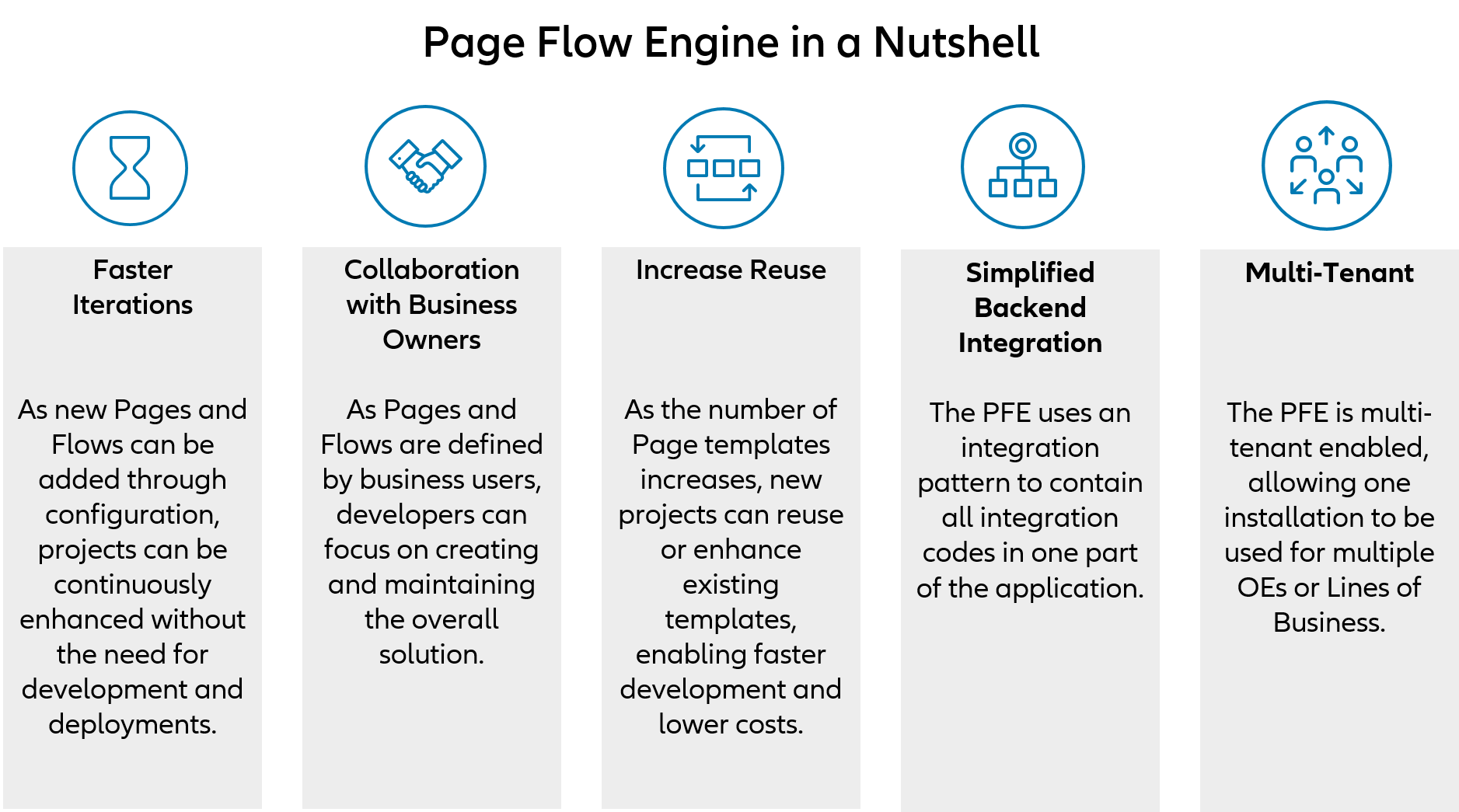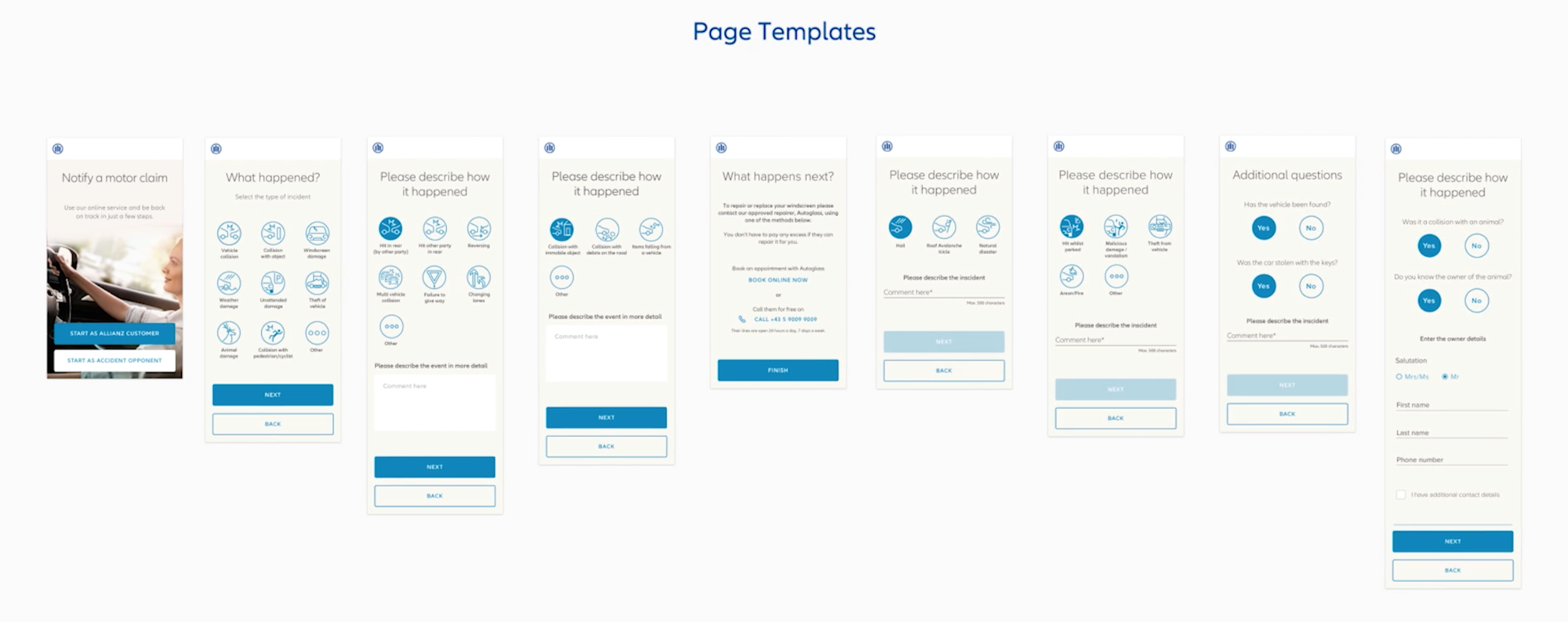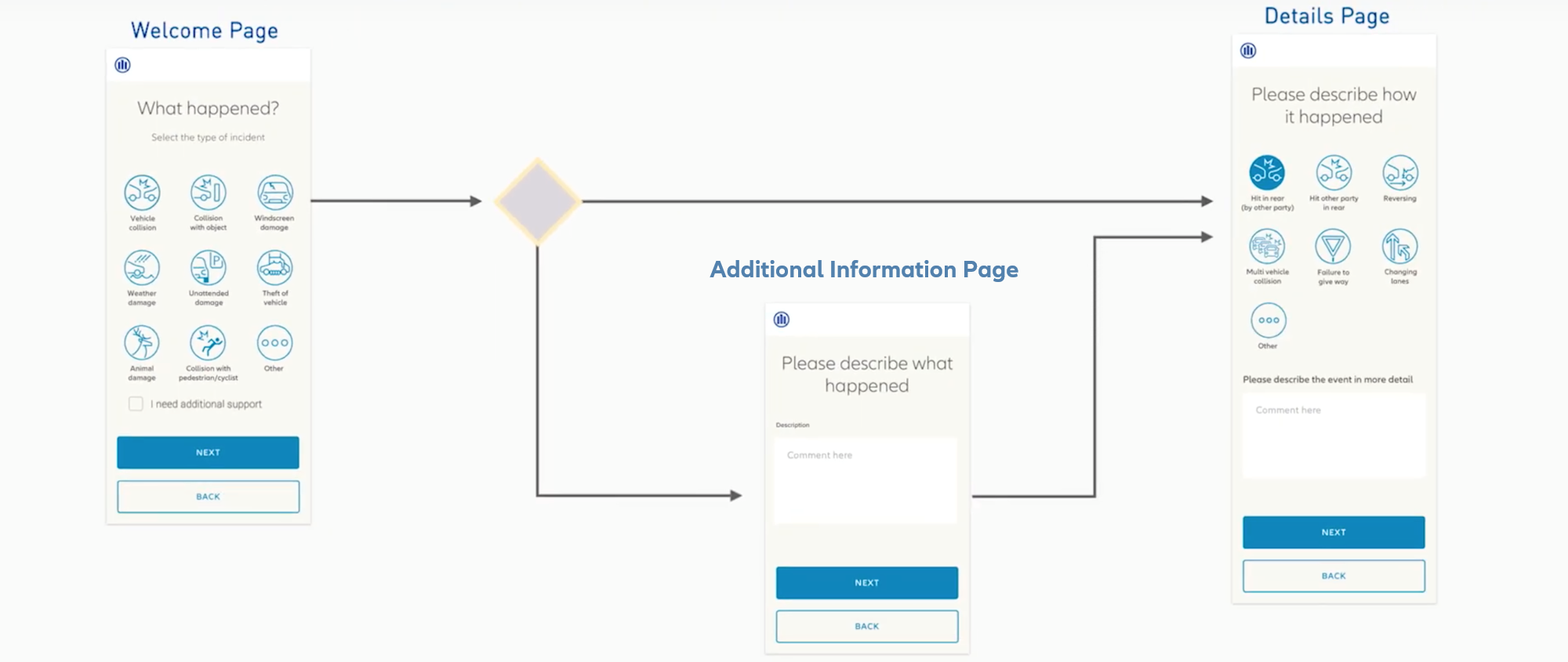
In this day and age, we see the majority of people spending time on their mobile phones and acquiring services through digital means such as online websites and/or mobile applications. At the Global Digital Factory, we focus on driving the digitalization and improvement of customer touch points across the Allianz Group. That means building digital solutions such as websites and mobile apps for our customers becomes one of our top priorities.
But we all know that building an app (be it mobile or web-based app) from scratch is difficult —it requires a lot of time and effort. At the GDF, we believe that building digital solutions should be fast and simple. Therefore, in early 2018 when the GDF team was developing their first FNOL (First Notification of Loss) solution, the team was inspired to innovate the tedious process and created GDF’s very own tool, the Page Flow Engine (PFE).
How does the Page Flow Engine (PFE) work?
Essentially, the PFE is a software framework which greatly reduces the time it takes to build an Angular application. It allows page templates to be created instead of building individual pages. The actual page content and navigation can then be defined by business users.
What the team realised very early on, was that many applications are made up of pages that look similar or follow similar patterns. Therefore, rather than creating a separate Angular page for each step in the application, the development team can now use the PFE to define page templates. Then Business owners can then define the pages from these templates, as well as define the page flow to create a solution that is customized to their business needs. The idea is to have a usable, customizable product to reduce time spent on the overall development.
Take for example, one application has a page flow which starts from Welcome Page to Details Page:


Use case Number 1: Different lines of Business? No problem!
GDF has developed two First Notice Of Loss assets, respectively for Home Claims and Motor Claims. With PFE, two different lines of business can be simply configured and implemented for multiple OEs, each with different requirement and different pages flows, all with one code base. No intensive programming efforts needed!
Use case Number 2: Localization is key!
Allianz Group has a truly global presence – that means localization comes into play when we build for different markets. So how does this impact the development of our digital solutions? Localizations to be made for an OE's application often include language variants, special entry forms, additional pages or modified flows. These configurations are made possible, easily and quickly with the PFE.
